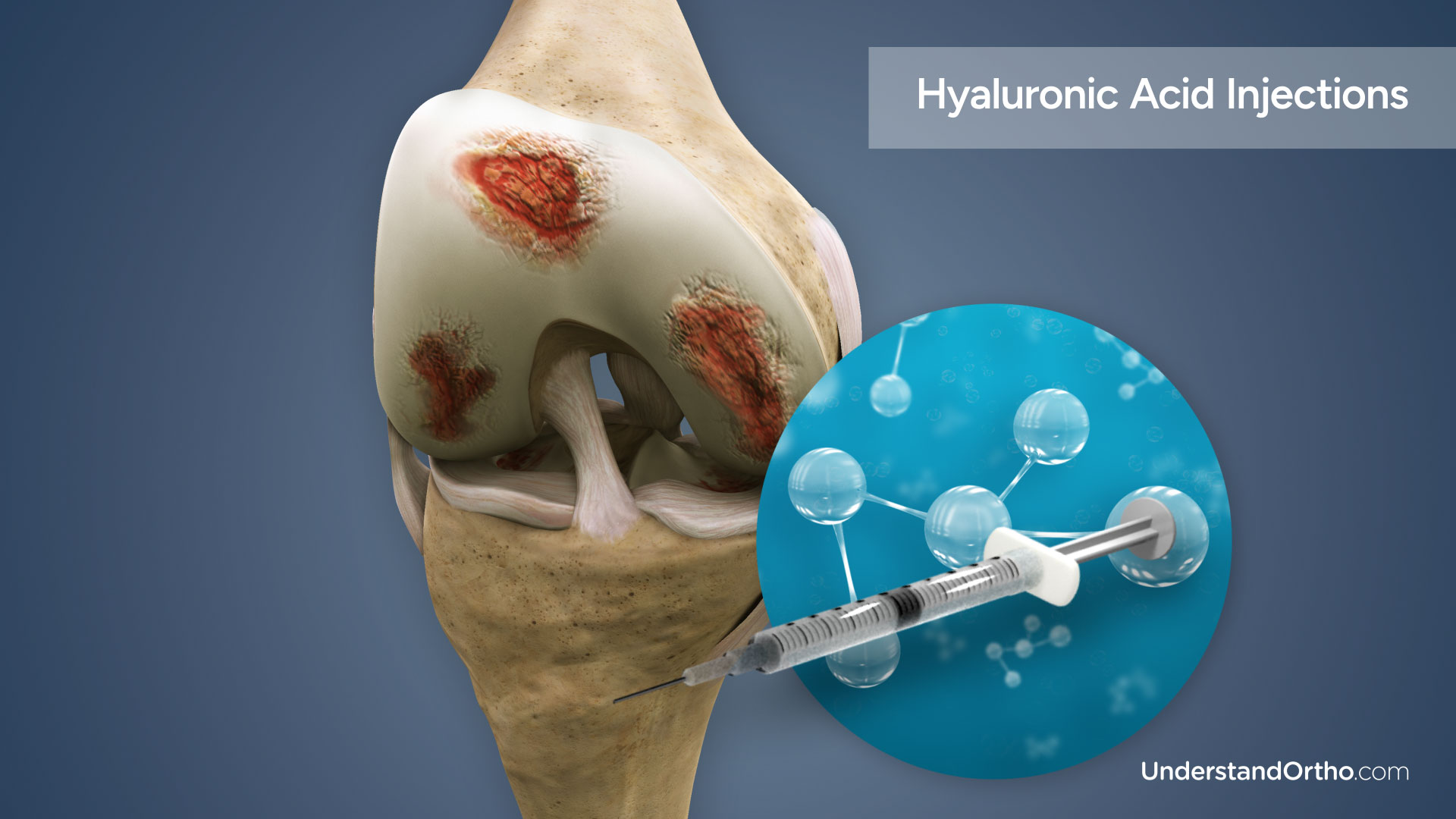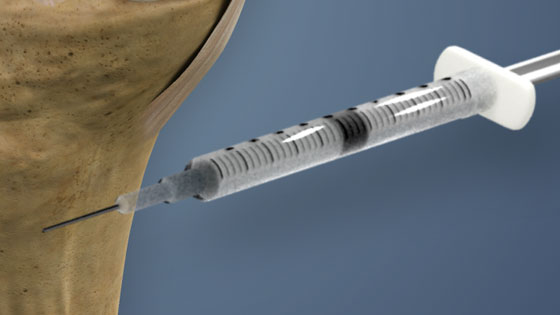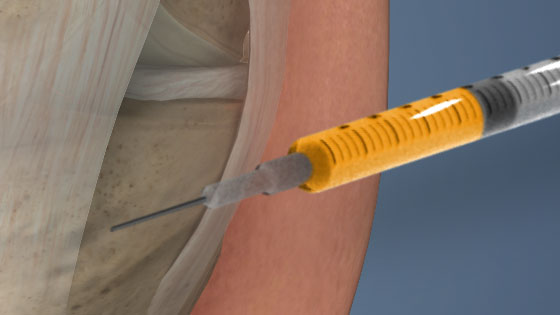What are Hyaluronic Acid Injections?
Hyaluronic acid injections (also known as viscosupplementation) are an orthopedic treatment used to alleviate pain and reduce inflammation in arthritic joints.

Key statistics about Hyaluronic Acid Injections
- Osteoarthritis affects 22.7% of the adult population of the United States[1]
- 41% of instances of osteoarthritis occur in the knee, followed by 30% in the hand, and 19% in the hip[1]
- Every year, more the 10% of individuals suffering from osteoarthritis of the knee undergo intra-articular injections[2]
- The maximum effect on pain from hyaluronic acid injections is 8 to 24 weeks from the time of injection[2]
Expert Insight
Understanding Injections for Orthopedics - Daniel Cooper, MD
What is Hyaluronic Acid?
Hyaluronic acid is a natural molecule that is found in many tissues of the body. Hyaluronic acid binds to and absorbs water molecules and helps lubricate and protect joints by ensuring that the bones glide smoothly against one another. Hyaluronic acid has also been shown to have anti-inflammatory properties.
Common brand names include Durolane, Euflexxa, Gel-One, Hyalgan, Monovisc, and Synvisc-ONE.
Why are Hyaluronic Acid Injections performed?
Hyaluronic acid injections are administered primarily to relieve pain and stiffness caused by arthritis. Arthritis occurs as the cartilage that cushions the knee wears down, causing the bones to grind against each other. This results in pain and inflammation, and can lead to bone deformity and a loss of joint mobility. Individuals suffering from arthritis typically have less natural hyaluronic acid in joint tissue, and replacing the hyaluronic acid with injections may alleviate symptoms.
Who needs Hyaluronic Acid Injections?
Arthritis may be the result of normal wear and tear due to aging (osteoarthritis), or may be caused by a knee injury (post-traumatic arthritis) or autoimmune disorder (rheumatoid arthritis).
Hyaluronic acid injections most commonly are utilized to treat mild to moderate osteoarthritis of the knee joint, but may benefit individuals with other types of arthritis in different joints as well.
Ideal candidates for hyaluronic acid injections suffer from pain and inflammation due to arthritis that has not responded to nonsurgical treatment such as physical therapy and medication.
How are Hyaluronic Acid Injections performed?
- A local anesthetic is used on the affected area, either via injection or spray.
- Excess fluid in the affected joint may be removed.
- Hyaluronic acid is injected into the joint space.
What are the risks of Hyaluronic Acid Injections?
Risks associated with hyaluronic injections may include:
- Pain at the injection site
- Infection
- Swelling
- Nerve or blood vessel damage
How long does it take to recover from Hyaluronic Acid Injections?
-
24-48 hours after the procedure
Hyaluronic acid injections are an outpatient procedure and patients will return home shortly after the injections. Pain and swelling at the injection site may occur, but should subside within 48 hours. Activity should be limited and the injection site should be iced regularly. -
1-5 weeks after the procedure
Some patients may require additional hyaluronic acid injections, which are typically spaced one week apart. -
4 weeks after the procedure
Most patients experience symptom relief after hyaluronic acid injections, which can last a few weeks to a few months.
What are the results of Hyaluronic Acid Injections?
Hyaluronic acid injections are a safe and effective non-surgical treatment option to manage the pain and inflammation associated with arthritis. Hyaluronic acid injections are a simple, minimally-invasive procedure with very few complications, and can increase joint functionality and delay surgery on damaged joints.
Find an Orthopedic Doctor in Your Area




